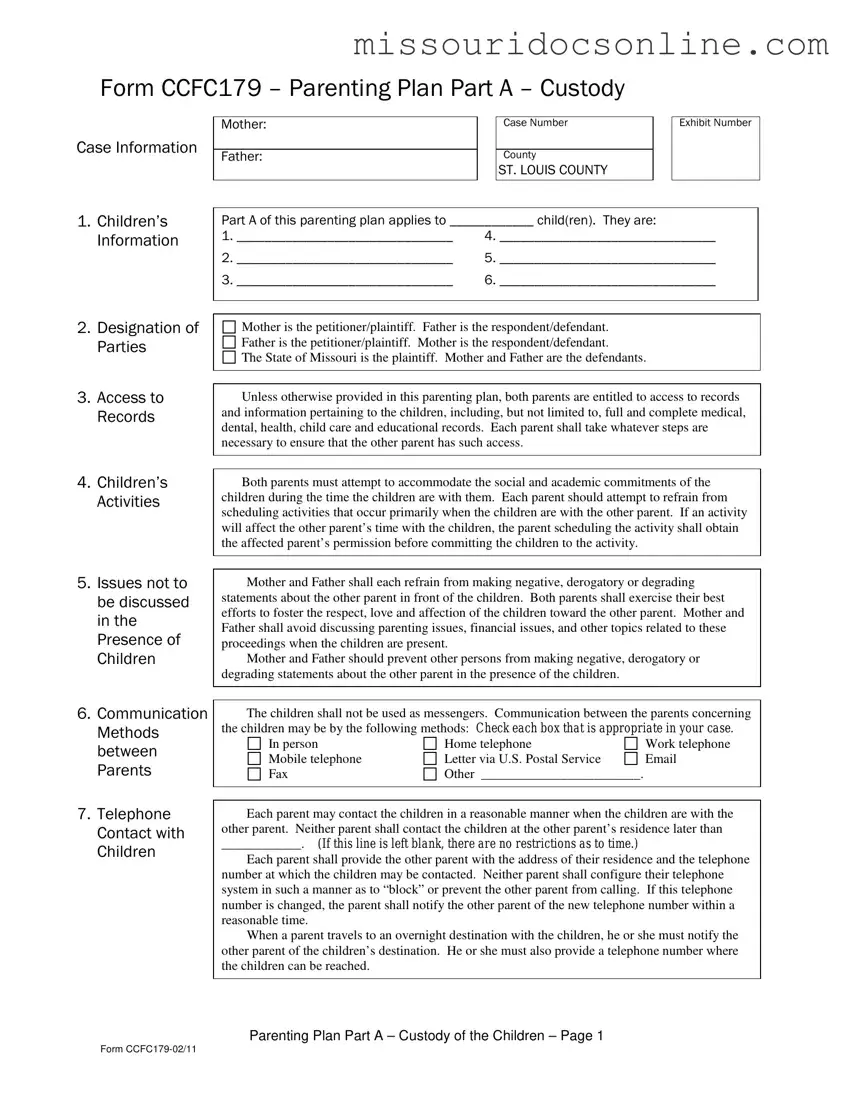Blank Missouri Parenting Plan Form
The Missouri Parenting Plan form is a crucial document designed to outline the custody arrangements and responsibilities of parents following a separation or divorce. This form helps ensure that both parents are on the same page regarding their children's upbringing, including decision-making and visitation schedules. To get started on filling out the Missouri Parenting Plan form, click the button below.
Access Missouri Parenting Plan Editor
